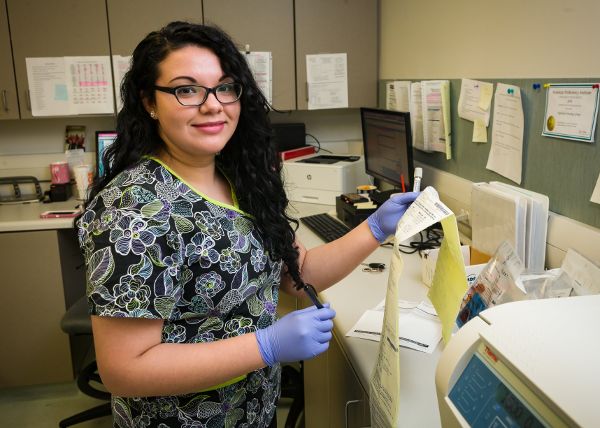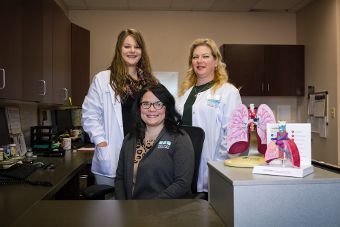Esophageal Cancer Overview
The esophagus contains several layers: mucosa, sub-mucosa, muscularis propria, and adventitia. Esophagus cancer typically begins in the mucosa and grows out from there. There are two types of esophageal cancer: squamous cell carcinoma and adenocardinoma. Squamous cell carcinoma is more commonly found in the upper part of the esophagus, while adenocarcinoma is typically found in the lower part of the esophagus. Rarely, lymphoma, melanoma and sarcoma can occur in the esophagus.
Symptoms
One of the most common symptoms of esophageal cancer is trouble swallowing or food getting stuck in the throat. Chest pain is another symptom, sometimes described as a feeling of pressure. Due to these discomforts, many patients may experience unintended weight loss. Other less common symptoms include: hoarseness, coughing, vomiting, or bleeding in the esophagus.
Risk Factors
As patients age, their risk increases. Fewer than 15% of esophageal cancers are found in patients younger than 55. Men are more likely than woman to have this particular type of cancer. Patients with reflux or GERD (or a more advanced condition called Barrett’s esophagus) may be at a higher risk of developing adenocarcinoma in the esophagus. Tobacco use is a major risk factor, including length and frequency of use. Alcohol consumption, obesity is also a risk factor for cancer of the esophagus.
Prevention
Making healthy choices can help reduce the risk factors for getting cancer of the esophagus. For example, avoiding tobacco and alcohol and maintaining a healthy body weight. In addition, seeking treatment for reflux or Barrett’s esophagus can help reduce side effects that can cause cancer.
Diagnosis
Your doctor will want to run a few tests to help confirm or rule out a diagnosis of esophageal cancer. A barium swallow involves patients drinking a thick liquid that coats the lining of the esophagus, following by an xray that will clearly show aberrations in the esophagus. A CT scan may be done to see if the cancer has spread to nearby areas. A PET scan is less detailed than a CT scan or MRI, but can provide helpful information on abnormalities seen on other tests. Endoscopy will be used to allow your doctor to see the inside of your stomach and esophagus and a biopsy may be taken during this procedure. A number of lab or blood tests will also be performed.
Treatment
Treatment for esophageal cancer depends on a number of factors including type, location, size and stage of the cancer.
Stage 0 esophagus cancer is often noted when a patient who has Barrett’s esophagus has a regularly scheduled biopsy. It is considered pre-cancer and usually means patients have long term monitoring by a physician with frequent endoscopic treatments.
Stage 1 is often treated with localized procedure or surgery to remove that area of the esophagus. Sometimes radiation or chemotherapy may be recommended for those whose concerning cells were not all removed surgically. Some doctors may suggest chemotherapy and radiation together instead of a surgical procedure.
Stage 2 and 3 esophageal cancer is usually treated with chemotherapy and radiation, followed by a surgical procedure. Patients who do not have surgery to remove the affected area will need to sure close monitoring by a physician to ensure the cancer does not return.
Stage 4 cancer, when the cancer has spread to lymph nodes far away or other organs. Esophagus cancer in this stage are very difficult to get rid of, so treatment is typically focused on reducing symptoms of the condition and keeping the cancer under control for as long as possible.







